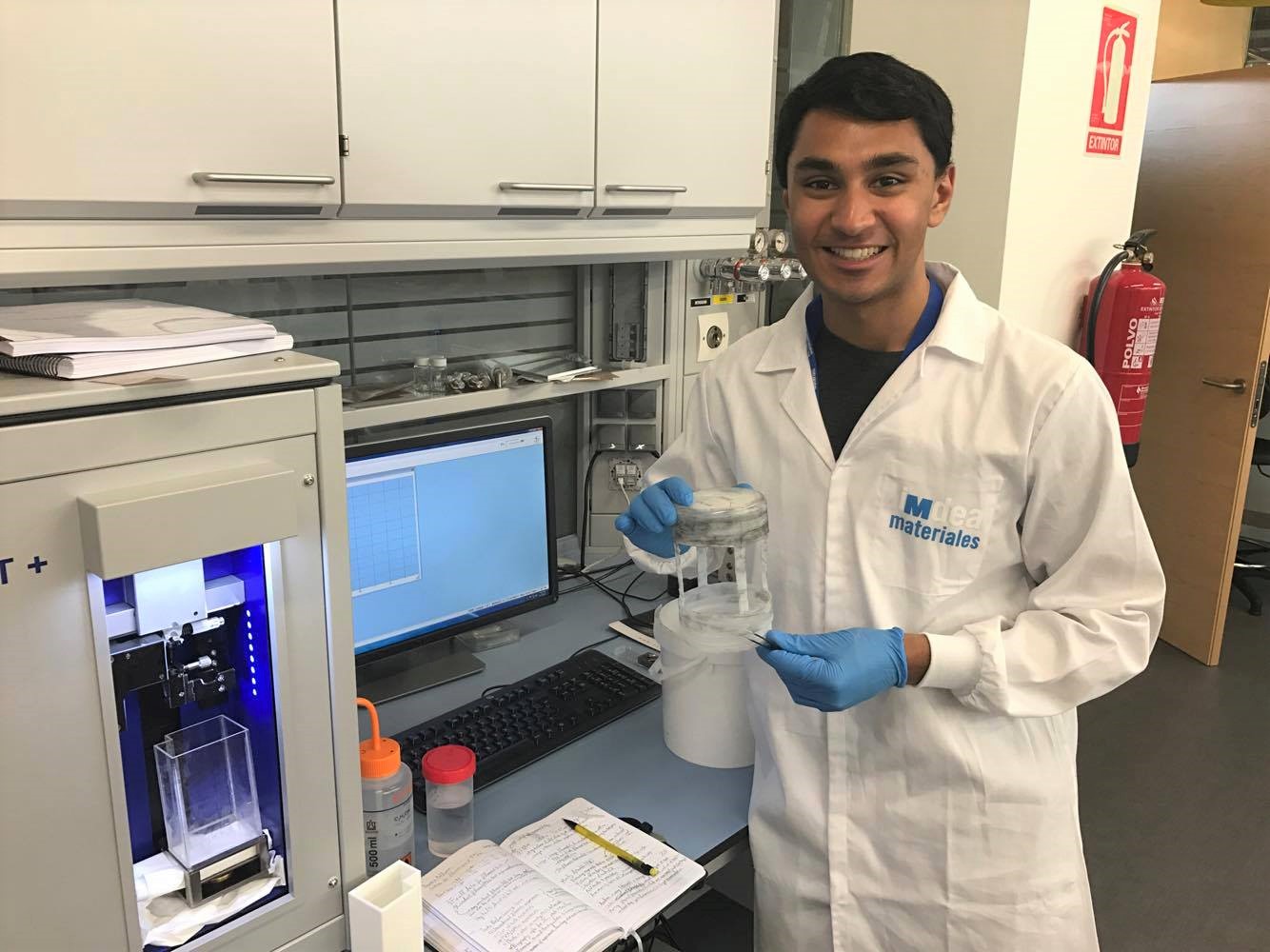- February 11, 2022
Rahul felt at home during his time in IMDEA’s team-driven collaborative environment.
While working on mechanics problem sets in his dorm room overlooking the Charles, little did Rahul know that in a few months he would be interpreting the results of nanomechanical experiments at a desk overlooking the fields of the Spanish heartland.
Immersion into carbon nanotube fibers and culture
Rahul traded the chilly temperatures of Massachusetts for the balmy 100+ degree (Fahrenheit) weather of Madrid, Spain at the beginning of his summer, unsure of exactly what was going to happen over the next few months. As an intern at a government-supported research institute called IMEDEA Materials, Rahul worked with nanomaterials such as graphene sheets and carbon nanotubes (CNTs). Rahul worked in the Multifunctional Nanocomposites Group at IMDEA Materials, the focus of which is to improve the electrical and mechanical properties of carbon nanotube fibers for various applications. Rahul specifically focused on how to improve the mechanical properties of carbon nanotube fibers through immersion in a variety of liquids. During his time at IMDEA, Rahul conducted many experiments on drawing liquids through CNT fibers, and eventually obtained results from these and began to explain them using contemporary CNT fiber structural theory. The end goal of his project was to develop a model to explain the mechanism by which liquid infiltrates and changes the properties of CNT fibers, which is still a topic that is not well understood. By the end of his internship, Rahul had developed a preliminary theoretical explanation for how liquids infiltrated CNT fibers, why exactly they improved mechanical properties, and even extrapolated how these explanations could be used in creating even stronger fibers through other means.
At home in his work environment
What Rahul liked most about his daily work was the duplicity of it: he was neither a “desk worker” nor a “lab rat”. Rahul worked part-time in the laboratory area (to conduct experiments) and part-time in the office area where he had a desk (for data analysis and producing presentations). Rahul made real progress towards research that had actual consequences (as opposed to doing menial tasks), and that fact along with the feeling of being valued by his group was wonderful. While this is definitely also the case in many other work environments, Rahul felt at home during his time in IMDEA’s team-driven collaborative environment. One of the most important things Rahul learned was that research and development (R&D) is not as simple as it seems, especially as a student. There is so much out there to learn, but more importantly, there are so many people willing to teach you! At no point during his summer did Rahul feel helpless or incapable of taking on hard challenges, because he knew that all his coworkers were more than willing to help me. Many of Rahul’s coworkers were all near experts in their respective areas of interest, and as a result, most of his learning happened through in-depth conversations with his coworkers.
Successfully developing new theory
At the end of the summer, Rahul had gone from knowing only about CNT fibers from textbooks to handling them with his own hands on a daily basis. Rahul successfully identified specific methods for improving the mechanical properties of CNT fibers through liquid immersion, and those materials are now closer to being used in commercial applications. Rahul also began to develop new theory for how liquids interact with CNT fibers on the nanoscale, which was nearly unthinkable at the beginning of his summer. As a proud materials engineering student (Course 3), Rahul looks forward to continuing his study of such nanomaterials at MIT.
Rahul is grateful for this experience. "MISTI Spain taught me more than I would have imagined - not only did I gain significant professional research and engineering experience, but I also learned how to communicate and solve problems in a more lucid way through working in an international atmosphere. Learning how to collaborate in a global group is not something that can be learned in a classroom, and I am so thankful to have had this opportunity to learn important 21st century skills through direct experience."
